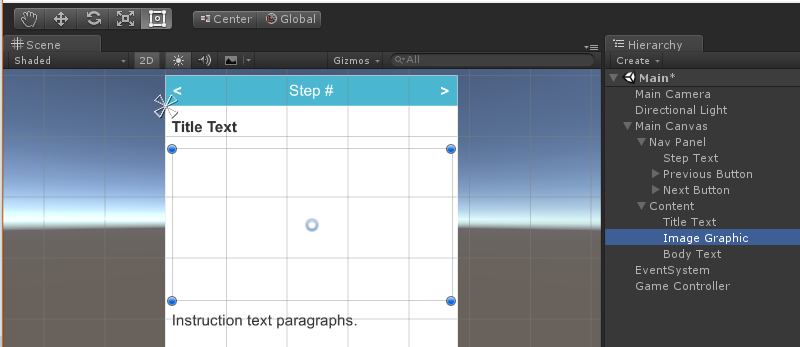Given our InstructionElement events, to add images to the instructions requires updates to the UI and the data model, but not the controller.
First let's add an image to the Content panel. Actually, we will add a Unity UI Raw Image, since the element named Image is reserved for sprites.
- In
Hierarchy, locate theContent panel(underMain Canvas), right-click, and selectUI | Raw Image. - Rename it
Image Graphic. - Select
Add Component | Layout Element. - Select
Preferred Width:395. - Select
Preferred Height:250. - Position it in the
HierarchybetweenTitle TextandBody Text.
The image ahead shows the now current Hierarchy, along with the Scene view of the Canvas:




